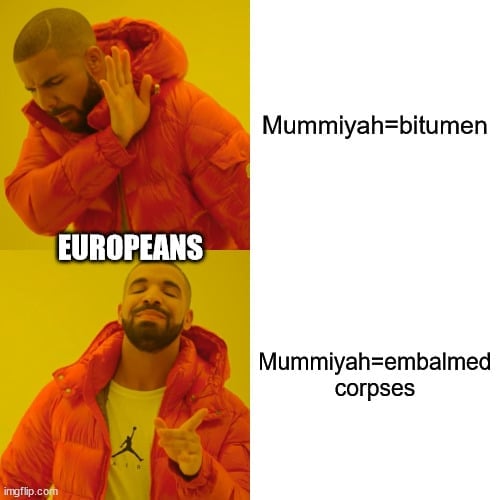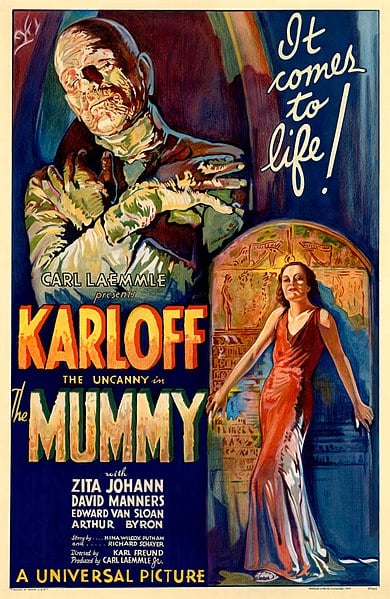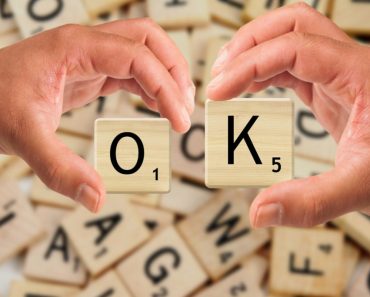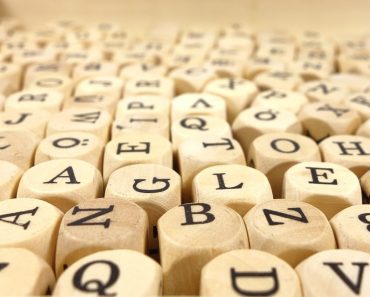Table of Contents (click to expand)
The origin of the word “mummy” comes from the Arab word ‘mummiya,’ which means bitumen. This word made its way into English and our popular imagination by a series of intriguing miscommunications.
Pop culture references around Egyptian mummies are a dime a dozen. Some shine as cherished cornerstones of media – the Brendan Fraser classic, The Mummy – while others are cheap shots like unimaginative jokes about mummies and mummies.
The dead one and the alive one have little in common. One is in a state of eternal sleep and the other barely gets any. One is covered in bandages from head to toe, while moms patch up offspring after they scrape their knee. Not to mention that one has had their brains removed, while the other is having their brains pureed by their offspring. The only thread that binds them is the 5 letter word… but how did that thread come to exist in the first place?
Recommended Video for you:
Origin Of The Word “Mummy”
The word ‘mummy’ (the Egyptian one) finds its origins in the Arabic word mummiya, which means ‘tar’ or ‘bitumen’. Bitumen is a naturally occurring organic chemical (hydrocarbon) that is a byproduct of petroleum. Today, it is better known by the name asphalt.
Bitumen is an important natural material. Along with its uses in construction and as an adhesive, it was also believed to have medicinal properties. Many physicians at the time, notably Arab physician Ibn Sina (Avicenna) and Muhammad ibn Zakariya al-Razi (Rhazes), wrote of the healing capabilities of bitumen, or mummiya, which could also mean a mixture of resins and oils. Both used the term in their treatises. Earlier texts by Roman physicians echoed the same.
When the Persians and then Arabs invaded Egypt (under the rule of the Byzantine/Easter Roman Empire) in the 7th century, they encountered ancient Egypt’s pyramids and the bandaged corpses that lay within.
To the Arabs, these dead bodies looked like they were covered in thick brown-black bitumen, and connected the appearance of bitumen, or mummiyah, to the Egyptian corpses in their writing.

Those medicinal books written in the 8th century by the Arabs and Persians all perpetuate this misunderstanding. When Europeans began translating these texts into Latin, and then later into English (and other European languages), the misunderstanding deepened.
In the 12th century, Gerard of Cremona, a translator of scientific works from Arabic to Latin, while translating Al Razi’s Liber ad Almansorem into Latin, confused the term bitumen for embalmed corpses of Egypt, and thus one main source of the confusion arises. He defined the word as, “the substance found in the land where bodies are buried with aloes, by which the liquid of the dead, mixed with the aloes, is transformed and is similar to marine pitch.”

Mummies actually launched a health fad of Europe. Starting from around the 12th century and peaking during the 15th and 16th centuries, Egyptian mummies were in high demand for their elusive healing properties. Any illness could be cured by using some “mummy powder”.
Europeans were grinding, powdering and pasting old mummy corpses and selling the result on the market. Any illness could apparently be cured by applying some mummy powder.
When the supply of authentic Egyptian mummies decreased, crafty criminal merchants began making their own stock. They would dig up dead bodies, mummify them, coat them with bitumen, let them dry and then powder them.
The mummy powder even made it into paints, giving us a distinct ‘mummy brown’ color at that time in history.
It is important to note that Egyptians didn’t always use bitumen. Some of the earliest dated mummies did not use bitumen to preserve mummies; they are instead coated in different mixtures of resins. According to some archeological findings, bitumen became a part of the mummification process only after 1000 BC, much later than what was initially assumed by the Arabs and Europeans.

Homonyms
English (and many other languages) is littered with words that have the same sound, but mean different things and have different origins.
Take these words for instance: bail (to clear water) and bail (release of a prisoner), beat (to hit) and beat (tired), capital (punishment of death) and capital (the chief city of a country), and so on. These are called homonyms.
Mummy and mummy is the same. The word for mother comes from old English. Much of Europe and Asia also have words for mother that start with ‘ma’: mama, mom, mum, maa, mommy, and mummy. According to one theory, all these words find root from the Proto-Indo-European language. Some linguists have also suggested that mother has a similar word in most languages due to the sounds babies find easiest to produce when they first learn to talk.
Mummies Today

Gone are the days of eating powdered mummies for health benefits. By the turn of the 20th century, medicine had moved away from mystery powders and alchemical formulations, but the word and the object had formed a link. So, when British archeologist Howard Carter and his team discovered the entrance to the tomb of Tutankhamen in 1922, the word took on a new cultural meaning.
The tomb and the myth around it caught the attention of the public in Europe and the USA. Hollywood made the 1932 film The Mummy, starring old Hollywood legends Boris Karloff and Zita Johann. Most museums have also had an Egypt exhibition at some point.
Mummies are a fascinating part of the human past, and a horrifying part of Hollywood’s allure, but thankfully, they aren’t being put in bottles for us to eat!
References (click to expand)
- Clark, K. A., Ikram, S., & Evershed, R. P. (2016, October 28). The significance of petroleum bitumen in ancient Egyptian mummies. Philosophical Transactions of the Royal Society A: Mathematical, Physical and Engineering Sciences. The Royal Society.
- Connan, J., Evershed, R. P., Biek, L., & Eglinton, G. (1999). Use and Trade of Bitumen in Antiquity and Prehistory: Molecular Archaeology Reveals Secrets of Past Civilizations [and Discussion]. Philosophical Transactions: Biological Sciences, 354(1379), 33–50. http://www.jstor.org/stable/56705 - JSTOR
- Harrell, J. A., & Lewan, M. D. (2002, May). Sources of mummy bitumen in ancient Egypt and Palestine. Archaeometry. Wiley.













